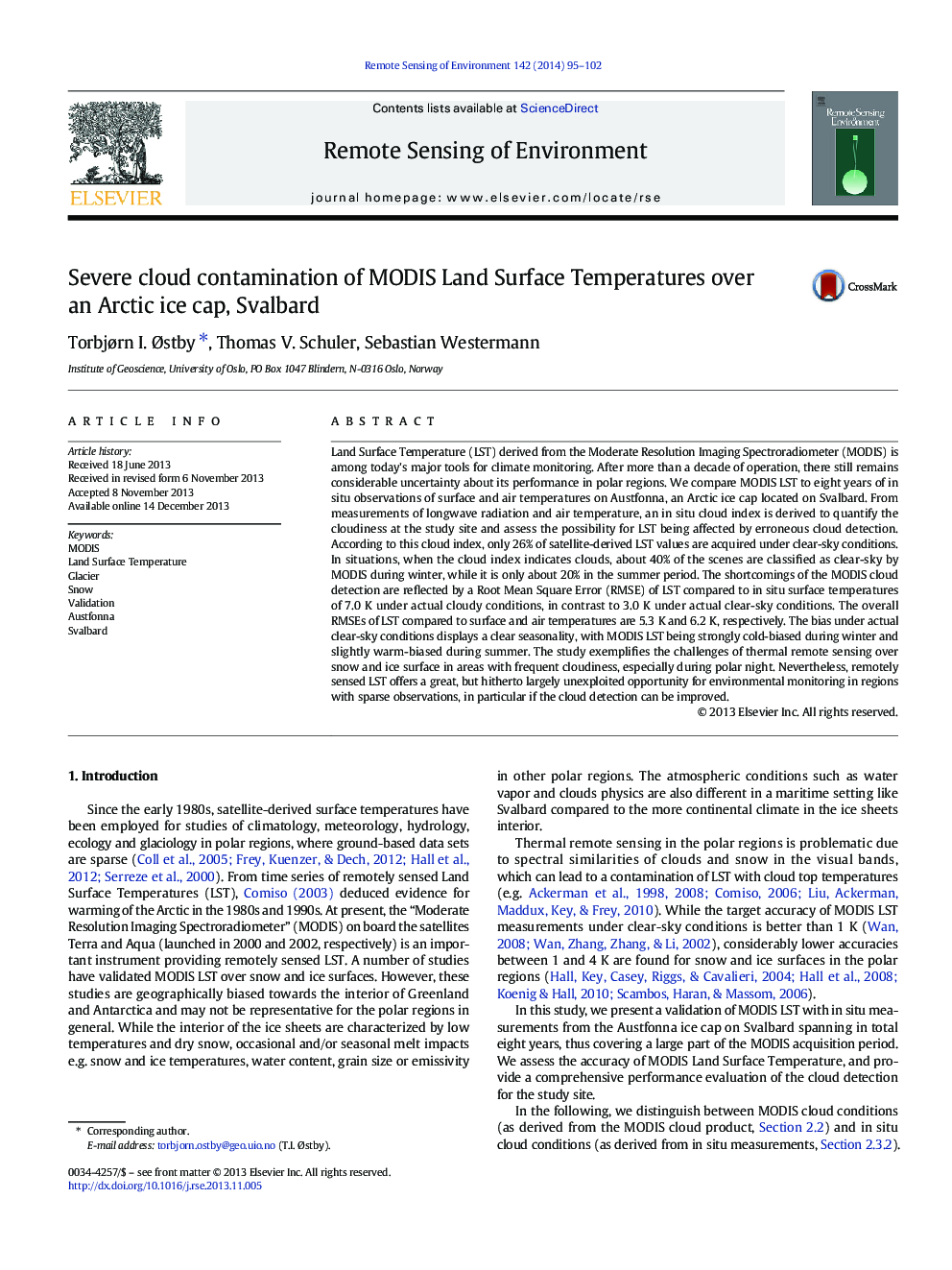| کد مقاله | کد نشریه | سال انتشار | مقاله انگلیسی | نسخه تمام متن |
|---|---|---|---|---|
| 6346937 | 1621258 | 2014 | 8 صفحه PDF | دانلود رایگان |
عنوان انگلیسی مقاله ISI
Severe cloud contamination of MODIS Land Surface Temperatures over an Arctic ice cap, Svalbard
دانلود مقاله + سفارش ترجمه
دانلود مقاله ISI انگلیسی
رایگان برای ایرانیان
کلمات کلیدی
موضوعات مرتبط
مهندسی و علوم پایه
علوم زمین و سیارات
کامپیوتر در علوم زمین
پیش نمایش صفحه اول مقاله

چکیده انگلیسی
Land Surface Temperature (LST) derived from the Moderate Resolution Imaging Spectroradiometer (MODIS) is among today's major tools for climate monitoring. After more than a decade of operation, there still remains considerable uncertainty about its performance in polar regions. We compare MODIS LST to eight years of in situ observations of surface and air temperatures on Austfonna, an Arctic ice cap located on Svalbard. From measurements of longwave radiation and air temperature, an in situ cloud index is derived to quantify the cloudiness at the study site and assess the possibility for LST being affected by erroneous cloud detection. According to this cloud index, only 26% of satellite-derived LST values are acquired under clear-sky conditions. In situations, when the cloud index indicates clouds, about 40% of the scenes are classified as clear-sky by MODIS during winter, while it is only about 20% in the summer period. The shortcomings of the MODIS cloud detection are reflected by a Root Mean Square Error (RMSE) of LST compared to in situ surface temperatures of 7.0Â K under actual cloudy conditions, in contrast to 3.0Â K under actual clear-sky conditions. The overall RMSEs of LST compared to surface and air temperatures are 5.3Â K and 6.2Â K, respectively. The bias under actual clear-sky conditions displays a clear seasonality, with MODIS LST being strongly cold-biased during winter and slightly warm-biased during summer. The study exemplifies the challenges of thermal remote sensing over snow and ice surface in areas with frequent cloudiness, especially during polar night. Nevertheless, remotely sensed LST offers a great, but hitherto largely unexploited opportunity for environmental monitoring in regions with sparse observations, in particular if the cloud detection can be improved.
ناشر
Database: Elsevier - ScienceDirect (ساینس دایرکت)
Journal: Remote Sensing of Environment - Volume 142, 25 February 2014, Pages 95-102
Journal: Remote Sensing of Environment - Volume 142, 25 February 2014, Pages 95-102
نویسندگان
Torbjørn I. Ãstby, Thomas V. Schuler, Sebastian Westermann,